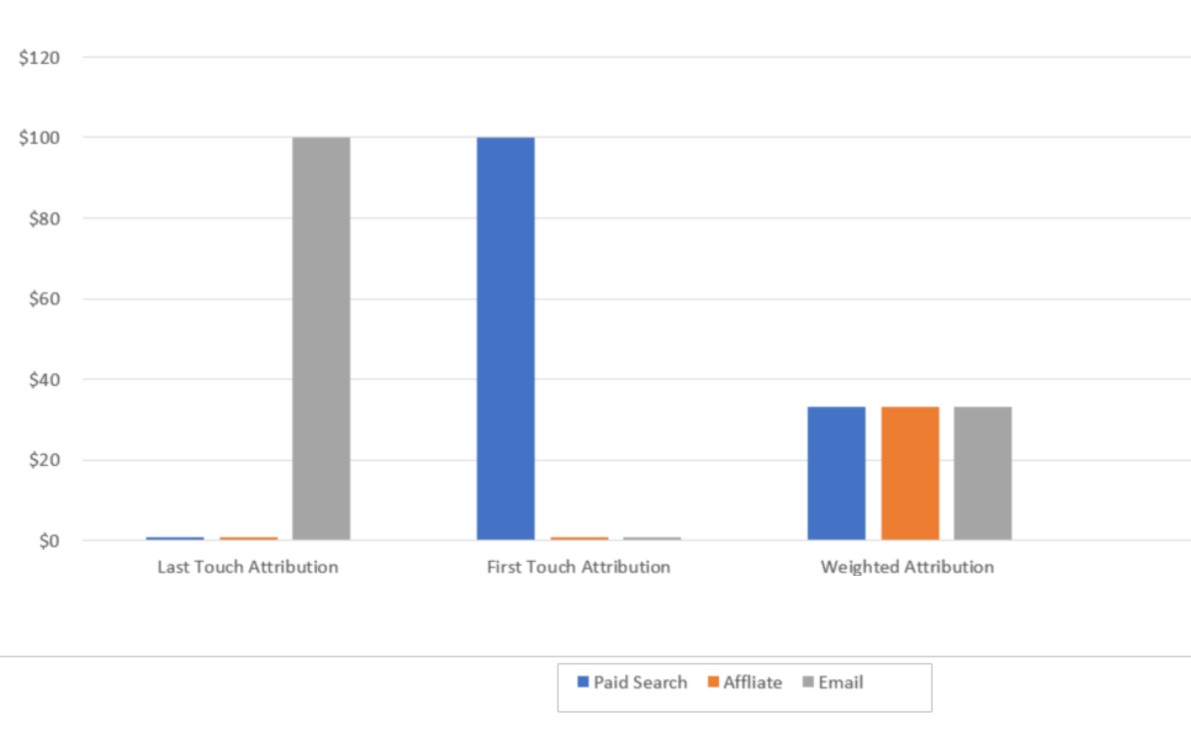Ecommerce merchants know the value of email marketing. It typically provides the highest return on investment of any marketing channel. In a 2016 Econsultancy survey, 76 percent of companies reported that email offers either “excellent” or “good” ROI.
In this post, I will discuss six ways to measure the effectiveness of email marketing.
Tracking Revenue from Email
Click-through sales. This method tracks revenue from a direct click in an email to the site and ultimate conversion. It typically requires the use of a web analytics tool to capture coded links, such as UTM parameters, from the email click to the website, to purchase.
The benefit of using this method is it tracks immediate sales from an email. However, it does not capture the potential, long-term impact that an email may have if users vary their purchase paths.
For example, a shopper may have clicked an email with the intention to purchase but was interrupted by a phone call. The shopper later returned via a Google Search and completed the order. This behavior would not credit the email. The credit would go to the search channel.
Before the rise of mobile devices, the path an individual took from click to purchase was more streamlined and easier to measure. But most recipients now check email on their mobile device first, making the conversion path less direct.
According to Campaign Monitor, an email service provider, in 2018 mobile users checked their email three times more often than non-mobile users. This is good news for retailers as more people are likely reading their email. But it makes measuring the impact more difficult.
Single-touch attribution. Web analytics can help attribute sales to the proper marketing channel. “First touch” and “last touch are the two most common single-touch attribution methods.
- First touch. A prospective customer clicks on a search ad, visits your site, and subscribes to email. The prospective customer receives an email a week later and makes a purchase. The revenue attribution goes to the search ad.
- Last touch. This method assumes that the action immediately before a conversion was responsible.
Weighted attribution. Some marketers use a combination of methods by weighing each associated touch. For example, say a consumer clicks a search ad and visits an ecommerce site. Later she returns to the site from an affiliate link but does not consummate the purchase. Still later she clicks on an email and places an order for $100. If the marketer has assigned equal weighted attribution for each media channel, the search ad, the affiliate site, and the email would each receive 33 percent credit for the sale.

This graph compares how last touch, first touch, and a weighted attribution approach would treat the same $100 sale.
Match-back analysis. A tracking method that does not require web analytics is a match-back analysis. In this method, all sales that were generated from a certain time frame after an email campaign are then compared against all email recipients. Recipients that made a purchase are attributed to that email.
This method captures all potential sales that may have resulted in an email exposure. As a downside, it likely attributes too many sales to the email channel because not every person who purchased did so because of the email.
Offer code redemptions. Tracking offer or promotion codes that were used in an email promotion is a good way to assess the revenue driven by the email. This method requires unique offer codes for the email channel.
The method is not foolproof, however. For example, email-only offers that are leaked and used by affiliates or coupon sites can inflate the impact the email channel had. Also, consumers may have purchased from the email but chose not to use the offer or otherwise forgot about it.
Test group method. In this method, you establish a random sample of recipients that does not receive an email offer while a test group does receive it. Then, after a time, compare revenue generated from each group to determine if there is a true lift from individuals receiving the email. When using this analysis, look at large orders that may skew results one way or the other.
Consistency Matters
Whichever method you use, stick to it. This ensures that month-over-month or year-over-year revenue comparisons accurately reflect the results of your email program.